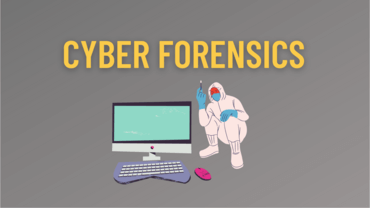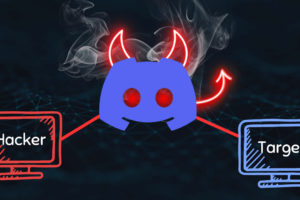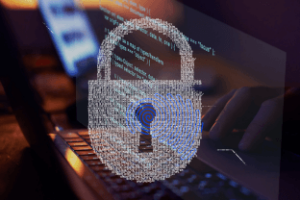Cyber Forensics
The process of collecting and recording evidence from a computer or computing device by applying investigative and analytical techniques is called cyber forensics. Network forensics is also known as computer forensics. The purpose of cyber forensics is to determine who is responsible for what happens on the computer while documenting the evidence and conducting a proper investigation. The storage medium of the device under investigation is made into a digital copy by the investigator to ensure that the device under investigation is not accidentally contaminated while investigating the digital copy.
Cyber forensics aims to identify, preserve, recover, analyze, document, and present information about cyber threat activity in a forensically sound manner in a court of law.
Digital evidence has become even more important in solving crimes and other legal problems, as computers and other data collection devices are used in nearly every aspect of everyday life. Computer forensics is used in civil and criminal justice systems to ensure the integrity of digital evidence. Businesses typically use multiple layers of data management, data governance, and cybersecurity policies to keep proprietary information secure. If data is under investigation, having well-managed and secure data helps simplify the forensics process. Businesses also use computer forensics to analyze information about systems or network compromises to identify and prosecute cyber attackers. Companies can also turn to forensic experts and processes to help them recover data from natural or other disasters.
Types of Computer Forensics
Database forensics.
Understandably, databases are filled with different types of information. Whether the data has been used maliciously can be investigated, or it can be determined how some legitimate data has been stolen or deleted. For example, sometimes valuable information in a database and links between database tables can reveal important information about the structure of a criminal organization.
Email forensics.
A lot of information can be found in even the most mundane emails. Malicious people can harvest
email addresses (senders and recipients) and start spamming these accounts in hopes of phishing them or spreading malware; IP addresses can be obtained as part of a reconnaissance mission, helping attackers visualize how the network is constructed; the headers contain a wealth of information that is equally useful to hackers, and these factors are present even before the content of the email is considered, and leaks can have various real-world consequences.
However, emails are just as useful to forensic investigators because they can be analyzed to uncover details about the sender and their motives, and can even be presented as evidence in a court of law.
Malware forensics.
Malware forensics refers to the reverse engineering of malware, but also includes the detection of existing or possible malware. One of the most immediately useful methods is to use the goat file (so named because the file is a scapegoat, sacrificed for the benefit of the investigator). Goat files are designed to make it easy for investigators to see how malware is modified Once the file is infected.
Memory forensics.
The term refers to the application of forensic techniques to any/all volatile memory, including RAM, caches (all levels), and registers (not to be confused with the registry). Memory forensics must be performed during real-time analysis because the contents of volatile memory are permanently lost when the system is shut down.
Mobile forensics.
Today’s mobile devices are basically smaller computers with their own operating systems, usually serving a specific purpose. All of the above forensics types and more apply to mobile device forensics.
Some mobile devices use proprietary operating systems such as iOS, and Windows Mobile, while others are based on open source systems such as Android; investigators need to understand all of these to be effective in the field.
Network forensics.
IP Tracing and Network Traffic Monitoring are the major components of Network Forensics. The main objective is to look for evidence of illegal activities that involve the transfer of files or information. It is worth noting that while most applications of network forensics use simulated network connections between the Internet, LAN, local ad-hoc networks, and virtual networks Both the machine (VM) and its host can be analyzed using the same techniques.
Operating System Forensics
Log file analysis is a major part of operating system forensics, as log file formats vary from operating system to operating system. To conduct operating system forensics, investigators must have a thorough understanding of multiple operating systems and be able to understand the meaning of logs generated by different operating systems.
Stages of Computer Forensics Investigation
In most forensic investigations, investigators follow standard procedures, which can vary depending on the circumstance, the device being investigated, or the information investigators are seeking. The typical phases of computer forensic investigation are:
Identification
The first phase of the investigation involves identifying and gathering the evidence. Investigators identify the potential pieces of evidence and collect them for further investigation.
Preservation
After gathering the crucial evidence, the next important task is to isolate the evidence and safely preserve the evidence to avoid any tampering or destruction and be presentable during the presentation phase.
Recovery
Gathered evidence is not always easily assessable. Sometimes, the evidence must be processed and recovered to access the crucial data. This recovered data will be further analyzed for extracting the root cause of the incident.
Analysis
This is the crucial phase of forensic investigation. The investigator analyzes the raw evidence using various tools to examine the computer memory, processes, registries, files, and folders to understand and determine what exactly happened to the compromised system, how did the compromise take place, identify the trail of events, and establish the indicators of compromise (IOCs).
Documentation
All the identified findings will be recorded and documented in this phase. This documentation can help recreate the crime and analyze the preserved evidence. Generally, investigators have a predefined forensic documentation template to document the findings and results.
Presentation
Presentation is the final phase of computer forensic investigation. In this phase, the investigators illustrate the evidence, analysis method, and empirical finding to the client, business management, stakeholders, or the court of law, depending on the scope of the investigation.
Required skills
Here are some of the many skills people need to learn.
1. Technical compatibility: based on technology. Therefore, an understanding of various technologies, computers, mobile phones, network hacking, security breaches, etc. is essential.
2. Attention to detail: Forensics should pay attention to detail, examining large amounts of data to identify evidence.
3. Knowledge of the law and criminal investigation: Forensic doctors should have technical knowledge of criminal law, criminal investigation, and white-collar crime.
4. Good communication skills: As part of a case, a forensic doctor should be able to analyze and interpret technical information in detail in an organization or court.
5. Understand the basics of cyber security: Cyber security and cyber forensics are closely related fields, and a strong cyber security foundation helps lead to a good career in cyber forensics.
6. Analytical skills: Forensic experts should have good analytical understanding skills to analyze evidence, understand patterns, interpret data and solve cases.
7. Motivation to learn: The field of cyber forensics is constantly changing and forensics candidates should be interested in learning about emerging trends.
8. Enthusiasm to work with challenges: Criminal investigations into law and order often involve disturbing content and events. Forensic medicine candidates should be able to work in such a challenging environment.
Cyber Forensics tools
The Sleuth kit
FTK Imager
Xplico
OSForensics
Bulk Extractor
Future scope
Cybercrime is on the rise, and the world today needs cyber forensic physicians to solve these crimes. Not only is cyber crime a threat to the organization, but it also affects human lives by promoting drugs, terrorism, and prostitution through the Internet. Therefore, it is important to fight cybercrime. This is 100% likely to be the most talked-about topic in the future world.
In conclusion
People will rely on computers to be safe, and someone will break them. The world will need people who can stop this from happening and think like these hackers. As a result, the demand for security professionals will continue to rise, and cyber forensics is an evergreen field.




